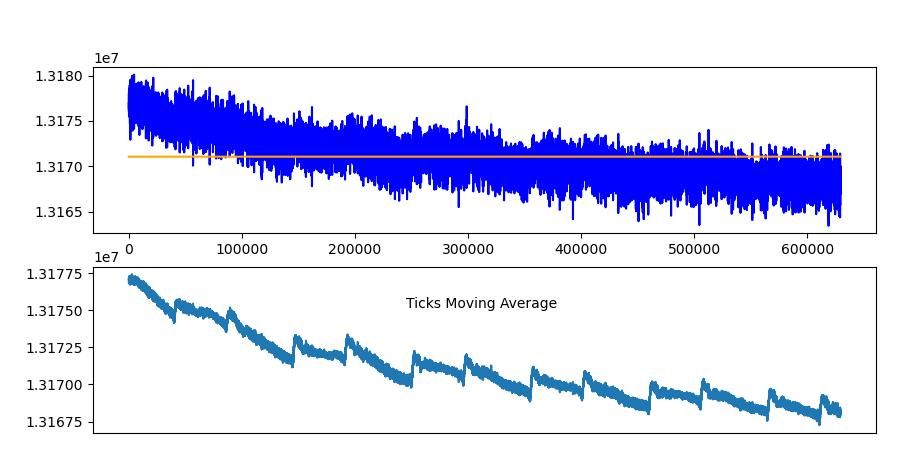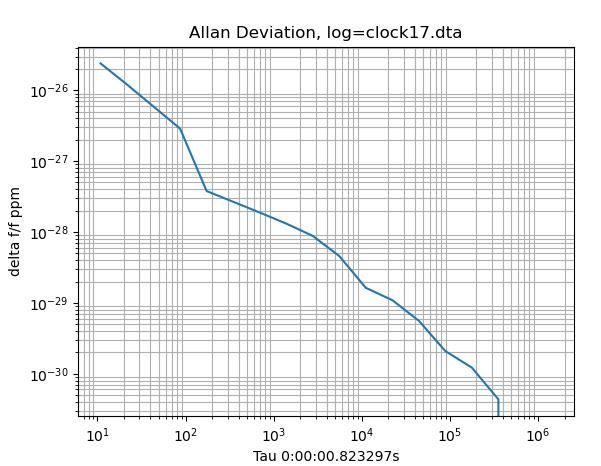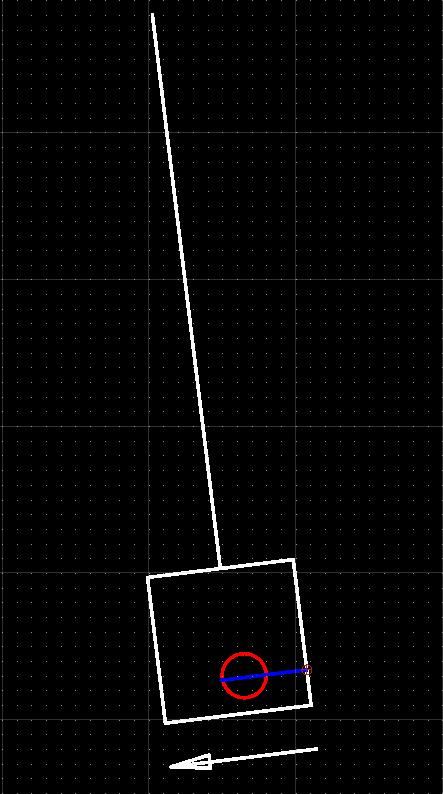Today's progress report.
I've been getting my head round applying compensation, and from the log can simulate how the clock would behave at any given combination of pressure and temperature.
If I apply correction to match the average temperature and average pressure during a 5 day run, the results are very encouraging. NTP measured the run at 518086.0 seconds, and the compensated clock ticks add up to 518085.99999999936s.
The orange line on the graph is the compensated result, nice and straight with the temperature bumps removed, and the increased speed due to low air pressure adjusted.

Not quite where I need to be yet because the result is compensated for average temperature and average pressure, which develop during the run. Extracting the correct time statistically after the event isn't the same as having the clock correct itself beat by beat in real time.
Chapter 18 of my copy of Rawling's "The Science of Clocks and Watches", tackles 'The Measurement of Clock Performance.' I believe the chapter, authored by Phillip Woodward, is a later addition. Recording my pendulum's timings with microsecond precision reveals lots of jitter; considered as an oscillator my pendulum is unstable, not good behaviour even though the instability evens out on average:

Chapter 18 discusses oscillator stability, which are all forms of frequency modulation caused by White, Pink, and Red Noise. White noise is due to random factors and is unavoidable. Even a mechanically perfect clock suffers white noise inaccuracy. However, an atomic clock is considerably less noisy than my pendulum!
A statistical technique called 'Allan Variance', detects white noise as a -0.5 slope. A zero gradient slope means the clock has Pink Noise, also caused Flicker Noise. The cause is unclear, but associated with complex systems. And when you look closely, pendula are remarkably complicated!
A positive gradient indicates Red Noise, or 'Random Walk FM'. It means the oscillator exhibits random changes of rate: one cause being a pendulum rod suffering 'spontaneous changes of length' because Invar is an unstable alloy. I suspect the matrix of my carbon fibre rod is also unstable, and perhaps so is its stainless steel spring – possibly work hardening.
After compensation, my clock's Allan Variance is spectacularly good, an almost perfect -0.5 slope!

No champagne yet. The graph screams 'fake' at me. I think it shows that my compensating calculations are smoothing out pink and red noise, not that my pendulum really has high stability. The maths is a sharp filter, hiding reality. An interesting point is that the fake may not matter if the maths causes the clock to successfully emulate a high-performer. Mechanical qualities replaced by predicting in software what the pendulum should do, and the clock tweaking the results to make them perfect. If you can't tell the difference, the fake must be OK. Hmmm.
Whilst playing with the numbers, I reset the real clock so it counts the average period found after 5 days, and also reduced impulse power. Be interesting to see how that plays out. I feel I'm get close to putting the PVC pipe on and pumping out the air. Pride comes before a fall!
Dave
Edited By SillyOldDuffer on 13/12/2022 16:28:50
duncan webster 1.










